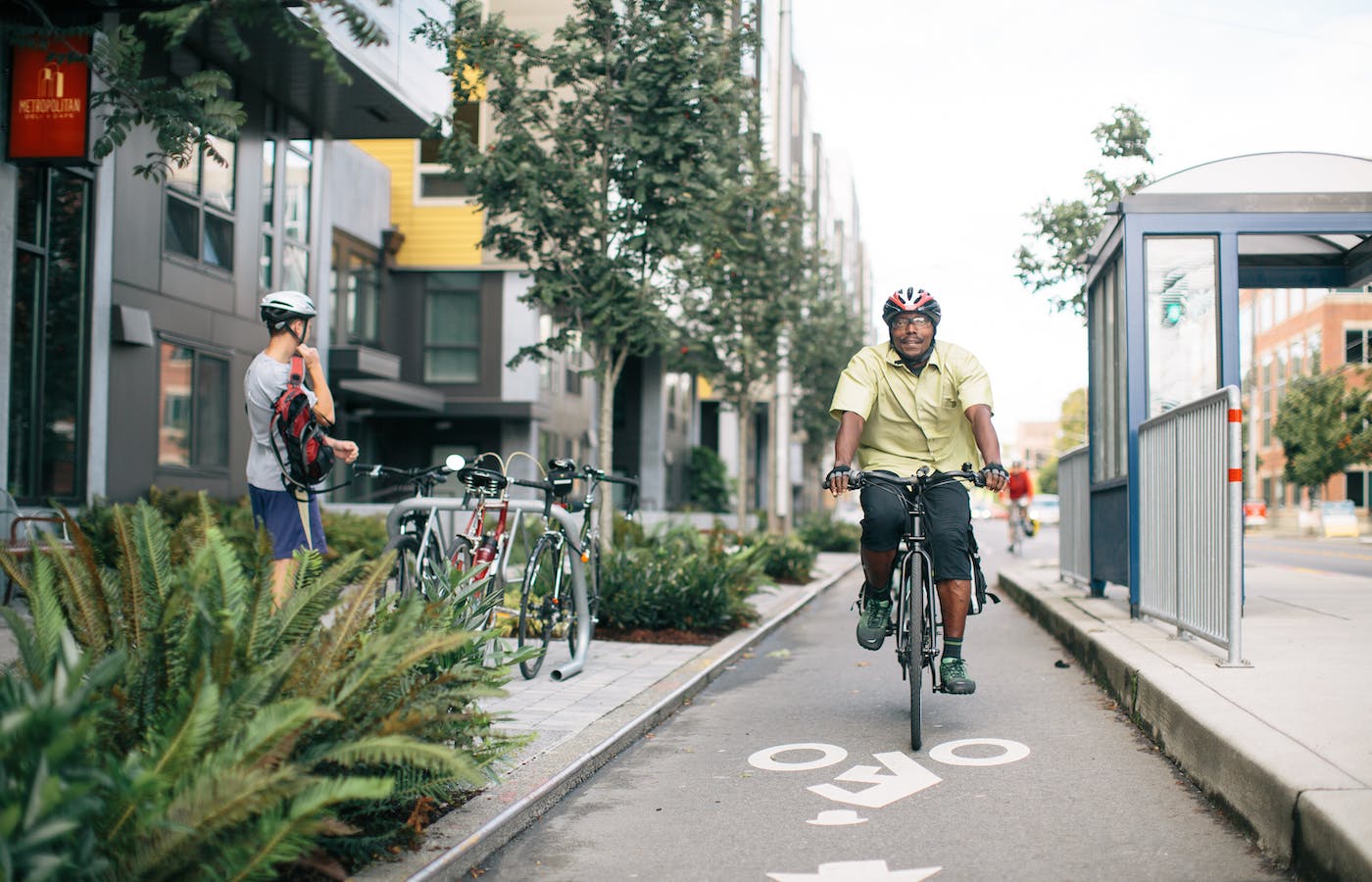Paving the Way for Complete Bike Networks: The Essential Role of State and Local Funding
By: Dave Snyder, senior director for infrastructure

While billions of dollars in federal funding is available for bike infrastructure, local and state funding still plays the biggest role in financing better bike networks.
This article about funding bike infrastructure is part of a series about the first and most important strategy promoted by PeopleForBikes’ Legislative Strategies Guide, a program of our Great Bike Infrastructure Project. Other strategies include mandating Complete Streets, centering bicycling as a solution to our climate challenge, and creating safer streets by lowering speeds, using modern design guidelines, and prohibiting right turns on red.
Funding from local and state government sources is essential for the development of bike infrastructure in communities nationwide for three main reasons:
- Those funds can unlock some of the $13 billion available in federal funding that can support the construction of bike infrastructure, as much of that federal money requires a local match.
- Federal funding alone often isn’t enough to make the necessary impact.
- State and local funding for bike infrastructure projects is easier to secure.
The chart below shows the proportion of funding from each level of government in California and Virginia.

Finally, and fortunately, local support for bicycling is strong. Typically, policymakers at more local levels can see how bike infrastructure directly improves their communities and allocate much larger proportions of funding to bicycling than their federal counterparts. PeopleForBikes’ Legislative Strategies Guide includes talking points to further strengthen the case for local funding.
Strategic Funding Sources
Our legislative guide includes a comprehensive look at more than a dozen strategies that are available to fund bike infrastructure at the local and state levels. It gives examples of language used by policymakers and points to success stories across the country for each of the following sources:
- General Obligation Bonds
- Sales Taxes
- Gas Taxes
- Road Tolls and Congestion Fees
- Climate Mitigation Revenue
- Special Districts
- Transportation Infrastructure Financing Districts
- Business Improvement Districts
- Parking Benefit Districts
- Developer Fees and Requirements
- Ridesharing Fees
- Unused Utility Corridor Fees
- Income Tax
A Closer Look
General Obligation (GO) Bonds represent a cornerstone for public infrastructure development. By backing projects with the full faith and credit of the issuing entity, these bonds have facilitated landmark initiatives, including the $460 million “Safe Mobility For All” bond approved by voters in Austin, Texas, in 2020.
Local sales taxes can raise massive amounts of funding, but state authorization may be required. Our legislative guide shows how policymakers in Georgia negotiated with stakeholders at the state level in order to eventually approve millions of dollars at the local level. Gas taxes are historically an important source of revenue, but as more cars go electric, road tolls and congestion fees will increase in importance.
Some states use climate mitigation programs to fund bike infrastructure. Special districts, such as transportation-focused tax increment financing districts, business improvement districts, and parking benefit districts, can be important sources of funding. Sacramento, California, has an innovative strategy to fund infrastructure through developer fees. Massachusetts mitigates the impact of rideshare services by charging a fee on all rideshare trips and using that fee to support safety improvements.
Unused utility corridors can make great bike trails — fees on undeveloped corridors incentivize utility companies to develop them into community amenities. States are also increasing income taxes on high-income earners to fund infrastructure. All of these examples and more can be found in the Legislative Strategies Guide. By exploring these options, municipalities, states, and advocates can find tailored solutions to meet their unique needs and challenges.
We encourage policymakers, community leaders, and bike advocates to consult our full guide for a detailed exploration of funding strategies. Together, we can turn our vision for safe, connected, and vibrant communities into a reality through more and better bike infrastructure.
Funding bike infrastructure is more than just an investment in cycling — it's an investment in healthier, more sustainable, and equitable communities. As we continue to advance the Great Bike Infrastructure Project, we can champion these funding strategies to ensure a bright future for biking nationwide.
To learn more about these real-world examples, what makes them effective, and how you can translate them into legislation for your community:
- View our webinar recording on funding bike infrastructure
- Review our Legislative Guide for Safe and Connected Bike Infrastructure
- Read our Supplemental Guide for Funding Bike Infrastructure, which includes data-backed talking points to help you advocate for change in your community
Join our email list to ensure you don’t miss subsequent posts in this blog series, where we’ll provide in-depth insights into Complete Streets mandates, advancing bike infrastructure through climate legislation, and creating safer streets for all.
Related Topics:
